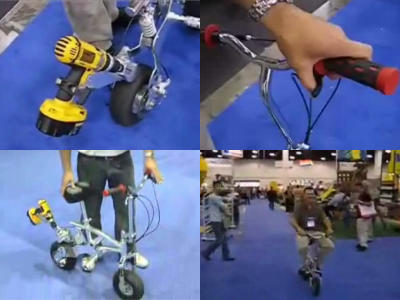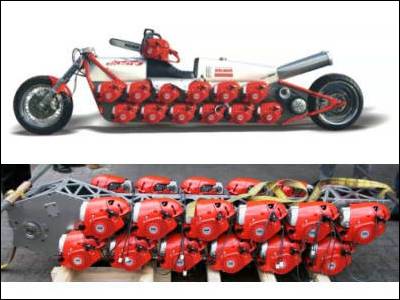A gigantic LEGO block cart made with a 3D printer Radio control pilot test of the cart is a troubleshooting movie

Lego block is a toy that assembles various things by combining small blocks. However, there are many people who thought "I would like to build up with larger parts" instead of "small parts." So, actually using a 3D printer to output huge LEGO blocks, a movie to control the assembled giant cart radio control "Giant LEGO R / C Go-Kart 3D Printed! - Mantis Hacks E 12"Has been published.
Giant LEGO R / C Go-Kart 3D Printed! - Mantis Hacks E12 - YouTube
This movie is Matt Denton's publishing movie of self-made multi-legged robot with 3D printerYouTube channelThose published in.
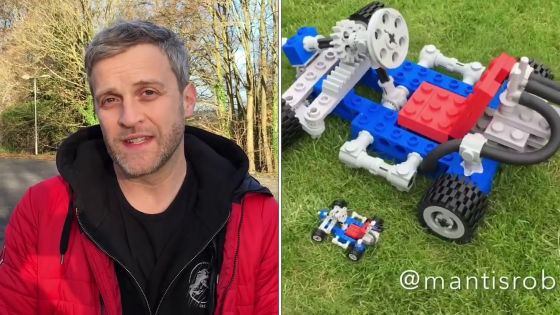
Denton in the pastAnother movieWe made many huge LEGO blocks with 3D printers and built a huge lego carat. The radio control of this time is a remodeled version which added power to the huge lego carat.
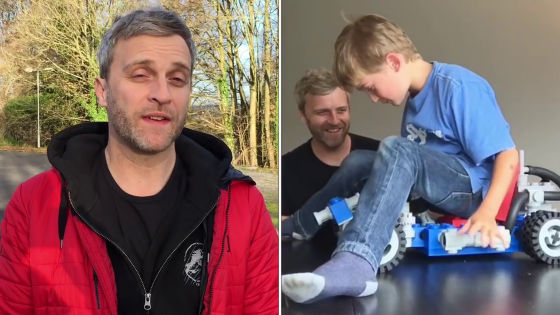
This is a huge lego carat that kore can operate radio control. According to Mr. Denton, "When considering the output of the motor on the real LEGO block scale, the size of the motor has increased by nearly five times."

A huge motor is attached to the front wheel part, so that steering can be operated by remote control operation.
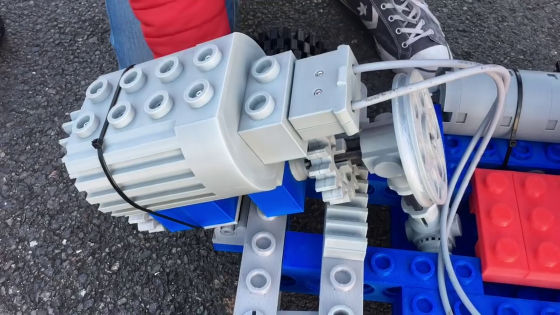
A DC motor is mounted on the rear of the car body, and it transmits the power to the rear wheel through the belt, and runs the cart.
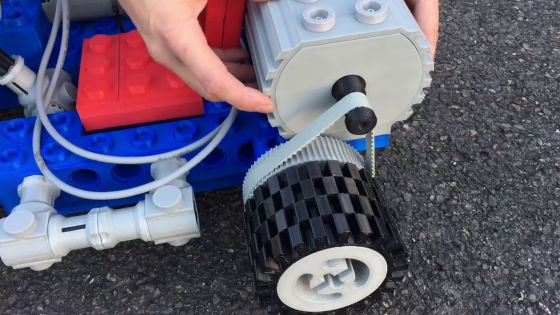
On the right is a lithium battery that supplies power to the motor and each part.
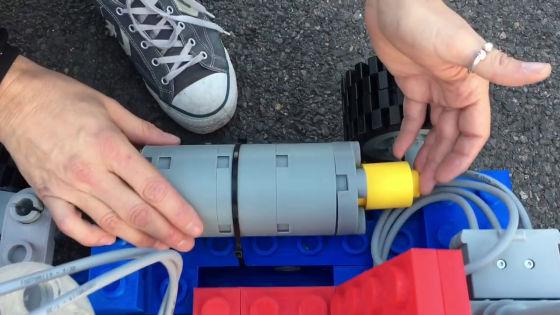
Because the tire is fitted with the same snap-fit method as the LEGO block ... ...
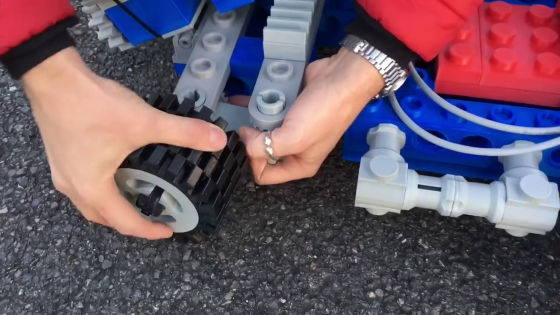
You can remove it by pulling and you can see that any part of the car body reproduces the design and snap fit of the Lego block as much as possible.

Test running start.
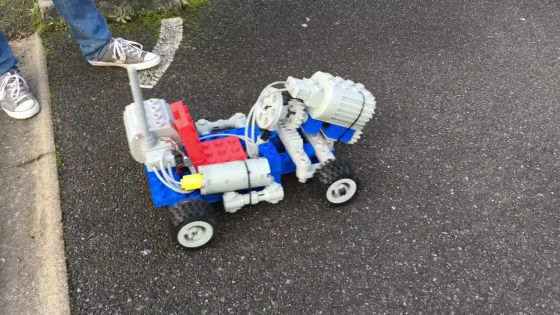
The cart goes straight ahead ......
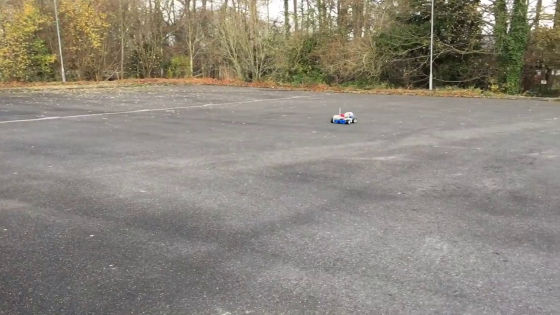
When it bent greatly, it stopped with machine trouble.
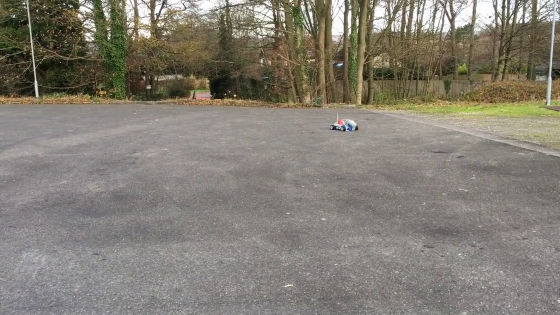
The cause of the machine trouble was because the block around the suspension of the front wheel was removed by the weight of the car body. Denton inserted a missing block and the repair was completed.

The second test run started.

The cart goes straight and drifts vigorously 180 degrees rotation ... ...
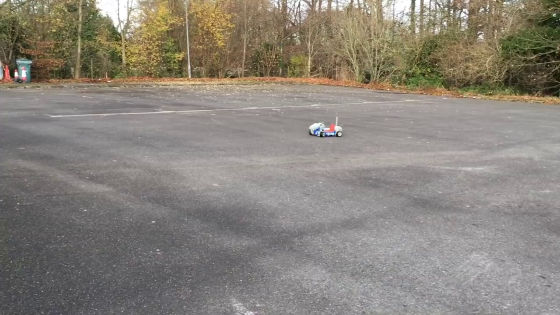
The drift momentum is left behind and the motor behind and the lithium ion battery fall. Denton was a big laugh at this happening.
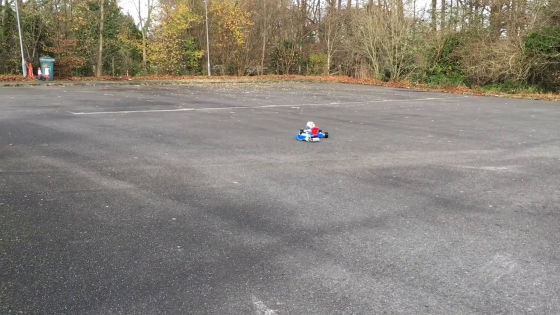
I bitterly smiled at the camera that "drift was good."

Improvement has been completed by incrementing each disassembled motor and lithium ion battery cables one by one.
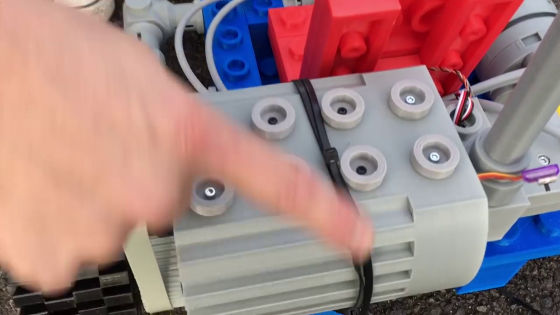
The third test run started.
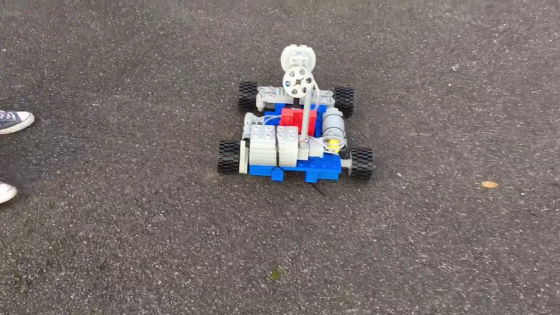
Curve right up vigorously ... ...

180 degree drift succeeded. As a result of the improvement, even if the cart drifts, neither the motor nor the lithium ion battery will fall.
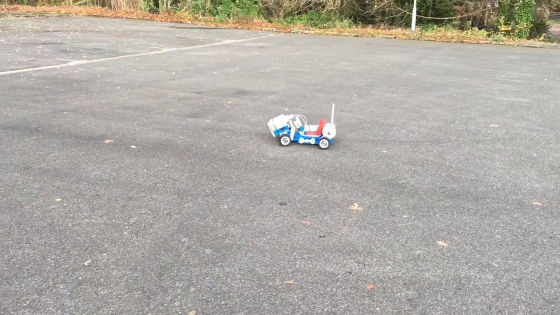
Running in front of Mr. Denton as it is ......
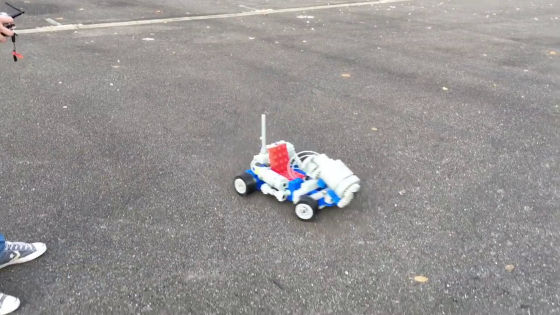
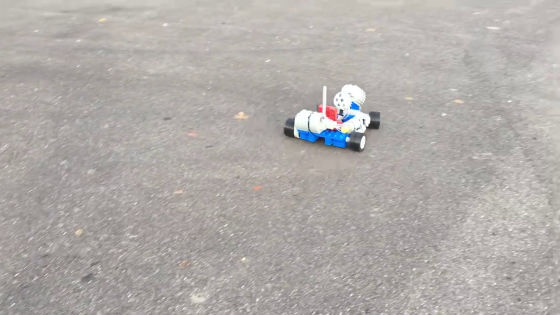
The sudden braking forcefully dropped the front motor. Denton also laughed a lot on this happening.

When Mr. Denton approached the Legokato and confirmed it, the motor in front was secluded quietly.

It seems that the snap-fit part of the Lego block connecting the front motor and the car body could not bear the momentum of sudden braking.
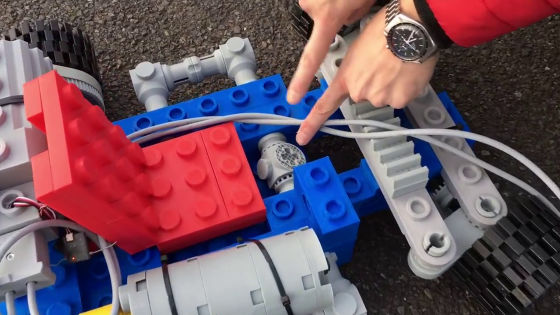
We improved the cable to fix the motor in front from 1 to 2 cables.
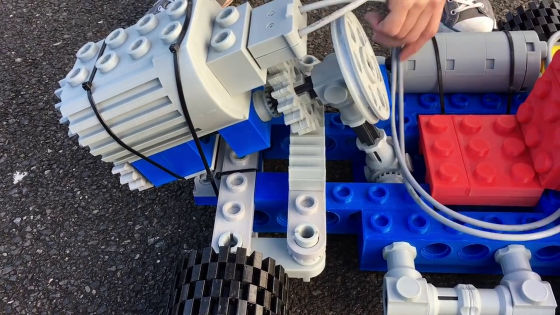
After that the running test also continued troubles, the fuse of the lithium-ion battery caught and stopped ......

I encountered troubles such as the tire falling off together with the tire shaft.
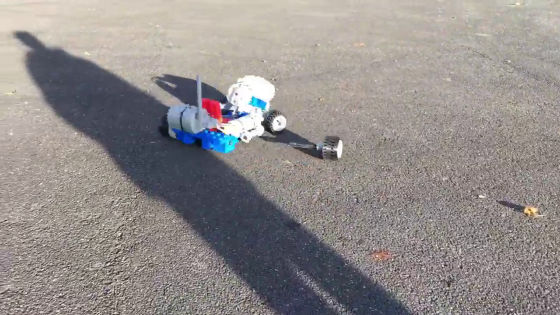
Next is a test run with a camera. The image projected by the camera has a sense of speed close to the ground and the distance.

The last is the speed measurement with the camera. Denton manipulates the cart to trick mischief.
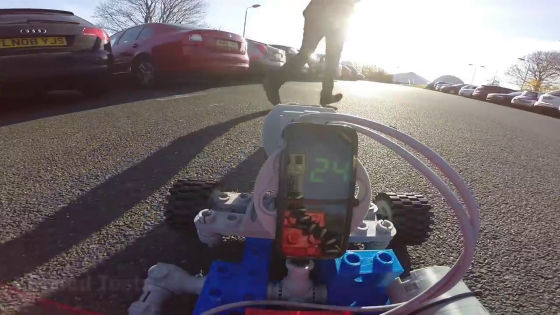
For speed measurement, we attached a smartphone to the steering wheel and measured it with the application. The measurement result reached the speed of 26.2 km / h, which is about a little faster than the adult men running with full power.

Finally Denton summarized. "You can say that this test is a success?"
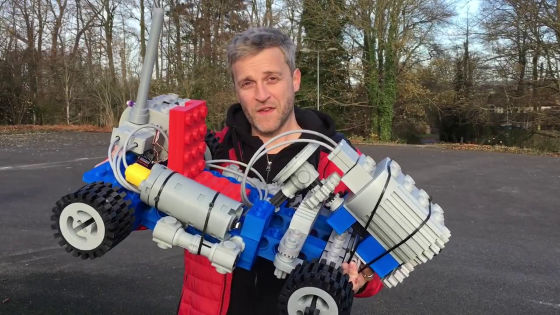
"There were more technical problems than expected as to the strength of the plastic parts and fixation with the cable."
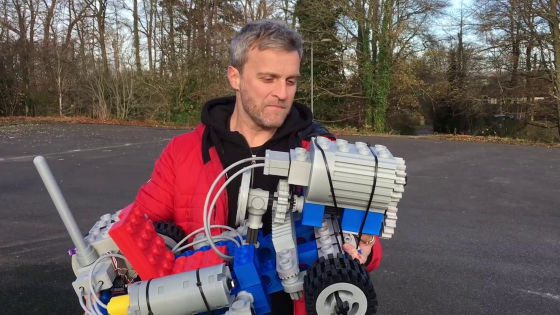
"How to make a cart in detail is on my channelOther moviesPlease look at "a word that concludes the end.
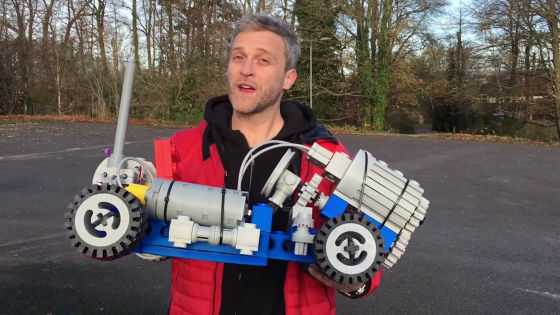
Related Posts:
